Preface
Contents
I Linear Systems
1 Motivating Problems and Systems
1.1 Social influence networks: opinion dynamics
1.2 Wireless sensor networks: averaging algorithms
1.3 Compartmental systems: dynamical flows among compartments
1.4 Appendix: Robotic networks in cyclic pursuit and balancing
1.5 Appendix: Design problems in wireless sensor networks
1.6 Appendix: List of examples and applications
1.7 Historical notes and further reading
1.8 Exercises
2 Elements of Matrix Theory
2.1 Linear systems and the Jordan normal form
2.2 Row-stochastic matrices and their spectral radius
2.3 Perron–Frobenius theory
2.4 Historical notes and further reading
2.5 Exercises
3 Elements of Graph Theory
3.1 Graphs and digraphs
3.2 Paths and connectivity in undirected graphs
3.3 Paths and connectivity in digraphs
3.4 Weighted digraphs
3.5 Appendix: Database collections and software libraries
3.6 Historical notes and further reading
3.7 Exercises
4 Elements of Algebraic Graph Theory
4.1 The adjacency matrix
4.2 Algebraic graph theory: basic and prototypical results
4.3 Graph theoretical characterization of irreducible matrices
4.4 Graph theoretical characterization of primitive matrices
4.5 Elements of spectral graph theory
4.6 Historical notes and further reading
4.7 Exercises
5 Discrete-time Averaging Systems
5.1 Averaging systems achieving consensus
5.2 Averaging with reducible matrices with multiple sinks
5.3 Appendix: Design of graphs weights
5.4 Appendix: Design and computation of centrality measures
5.5 Historical notes and further reading
5.6 Exercises
6 The Laplacian Matrix
6.1 The Laplacian matrix
6.2 Properties of the Laplacian matrix
6.3 Symmetric Laplacian matrices and the algebraic connectivity
6.4 Appendix: Community detection via algebraic connectivity
6.5 Appendix: Control design for clock synchronization
6.6 Historical notes and further reading
6.7 Exercises
7 Continuous-time Averaging Systems
7.1 Example systems
7.2 Continuous-time linear systems and their convergence properties
7.3 The Laplacian flow
7.4 Second-order Laplacian flows
7.5 Appendix: Design of weight-balanced digraphs
7.6 Historical notes and further reading
7.7 Exercises
8 The Incidence Matrix and its Applications
8.1 The incidence matrix
8.2 Properties of the incidence matrix
8.3 Cuts and cycles
8.4 Appendix: Distributed estimation from relative measurements
8.5 Historical notes and further reading
8.6 Exercises
9 Positive and Compartmental Systems
9.1 Example systems
9.2 Positive systems and Metzler matrices
9.3 Compartmental systems
9.4 Appendix: Symmetric physical flow systems
9.5 Appendix: A static nonlinear flow problem
9.6 Tables of asymptotic behaviors for averaging and positive systems
9.7 Historical notes and further reading
9.8 Exercises
II Topics in Averaging Systems
10 Convergence Rates, Scalability and Optimization
10.1 Some preliminary calculations and observations
10.2 Convergence factors for row-stochastic matrices
10.3 Cumulative quadratic disagreement for symmetric matrices
10.4 Circulant network examples and scalability analysis
10.5 Appendix: Accelerated averaging algorithm
10.6 Appendix: Design of fastest distributed averaging
10.7 Historical notes and further reading
10.8 Exercises
11 Time-varying Averaging Algorithms
11.1 Examples and models of time-varying discrete-time algorithms
11.2 Models of time-varying averaging algorithms
11.3 Convergence over time-varying graphs connected at all times
11.4 Convergence over time-varying digraphs connected over time
11.5 A new analysis method for convergence to consensus
11.6 Time-varying algorithms in continuous-time
11.7 Historical notes and further reading
11.8 Exercises
12 Randomized Averaging Algorithms
12.1 Examples of randomized averaging algorithms
12.2 A brief review of probability theory
12.3 Randomized averaging algorithms
12.4 Historical notes and further reading
12.5 Table of asymptotic behaviors for averaging systems
III Nonlinear Systems
13 Motivating Problems and Systems
13.1 Lotka-Volterra population models
13.2 Kuramoto coupled-oscillator models
13.3 Exercises
14 Stability Theory for Dynamical Systems
14.1 On sets and functions
14.2 Dynamical systems and stability notions
14.3 First main convergence tool: the Lyapunov Stability Criteria
14.4 Second main convergence tool: the Krasovskiı-LaSalle Invariance Principle
14.5 Application #1: Linear and linearized systems
14.6 Application #2: Negative gradient systems
14.7 Application #3: Continuous-time averaging systems and Laplacian matrices
14.8 Application #4: Positive linear systems and Metzler matrices
14.9 Historical notes and further reading
14.10 Exercises
15 Lotka-Volterra Population Dynamics
15.1 Two-species model and analysis
15.2 General results for Lotka-Volterra models
15.3 Cooperative Lotka-Volterra models
15.4 Historical notes and further reading
15.5 Exercises
16 Networks of Coupled Oscillators
16.1 Preliminary notation and analysis
16.2 Synchronization of identical oscillators
16.3 Synchronization of heterogeneous oscillators
16.4 Historical notes and further reading
16.5 Exercises
Bibliography
Subject Index
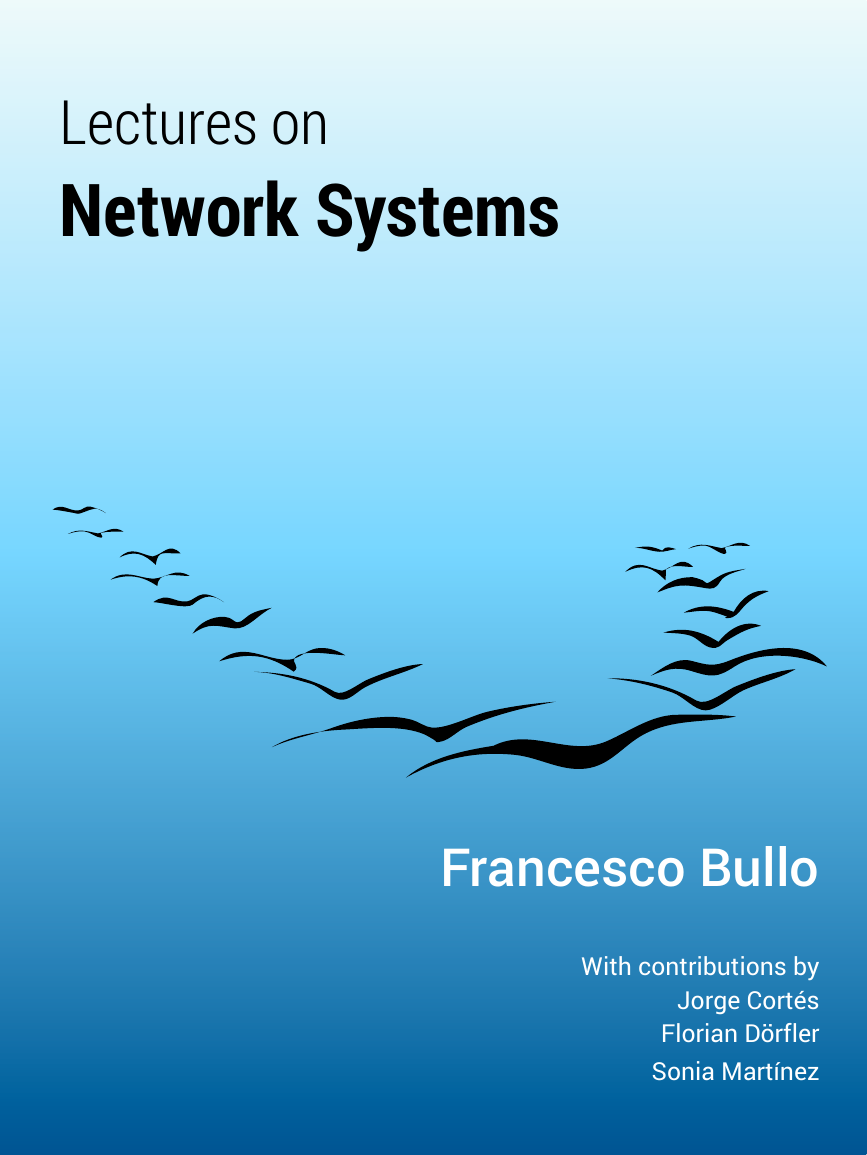
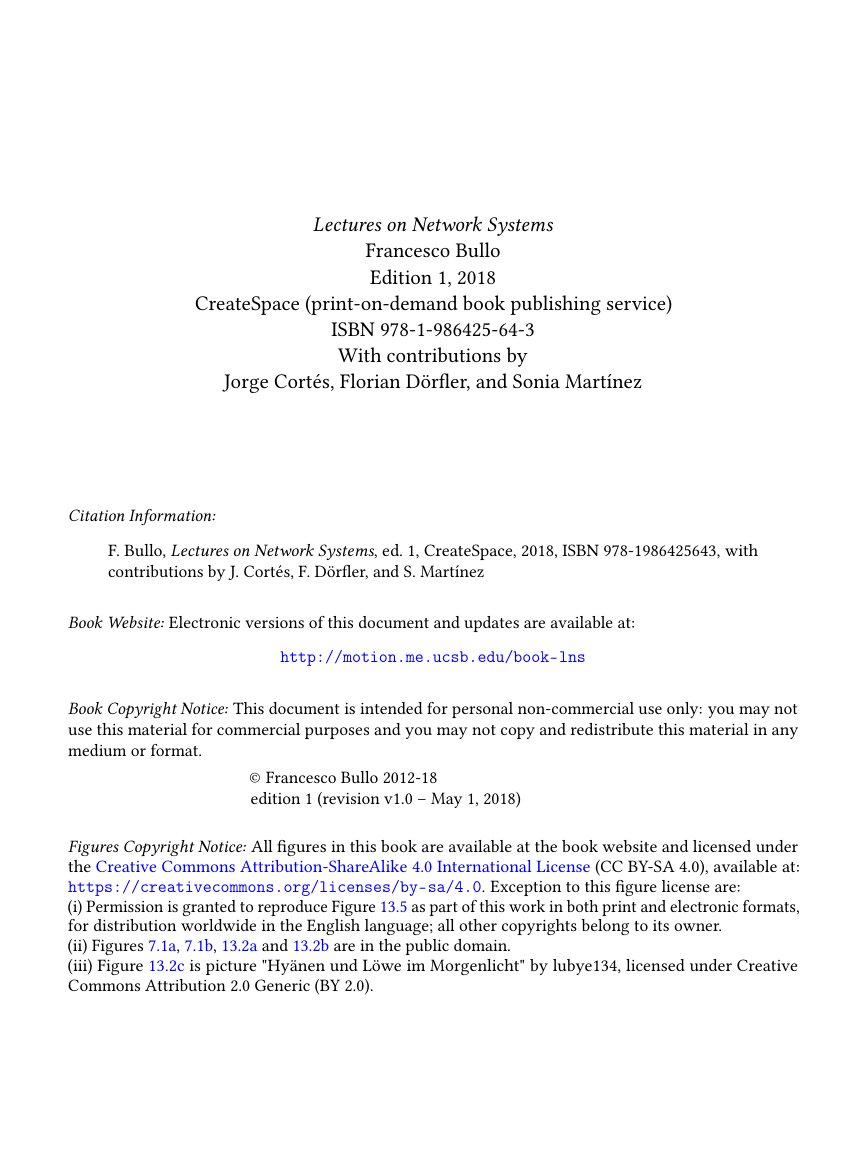


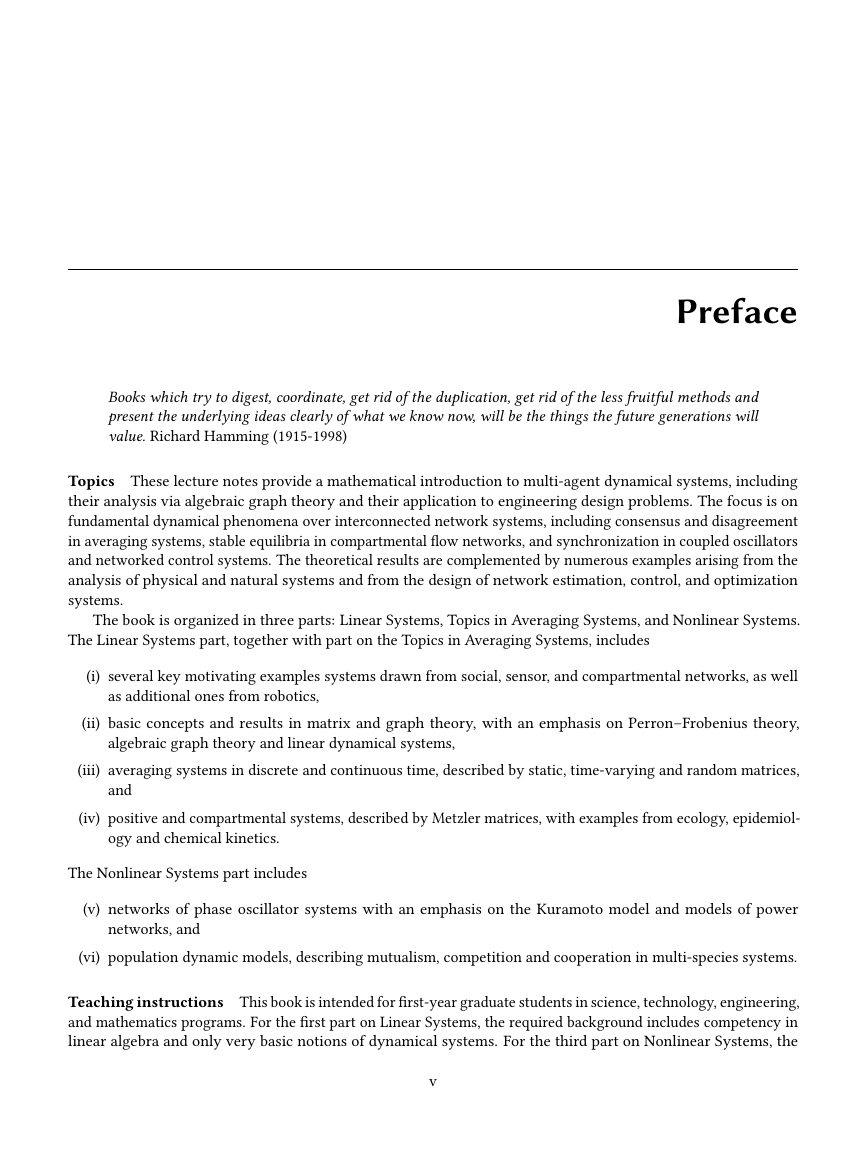

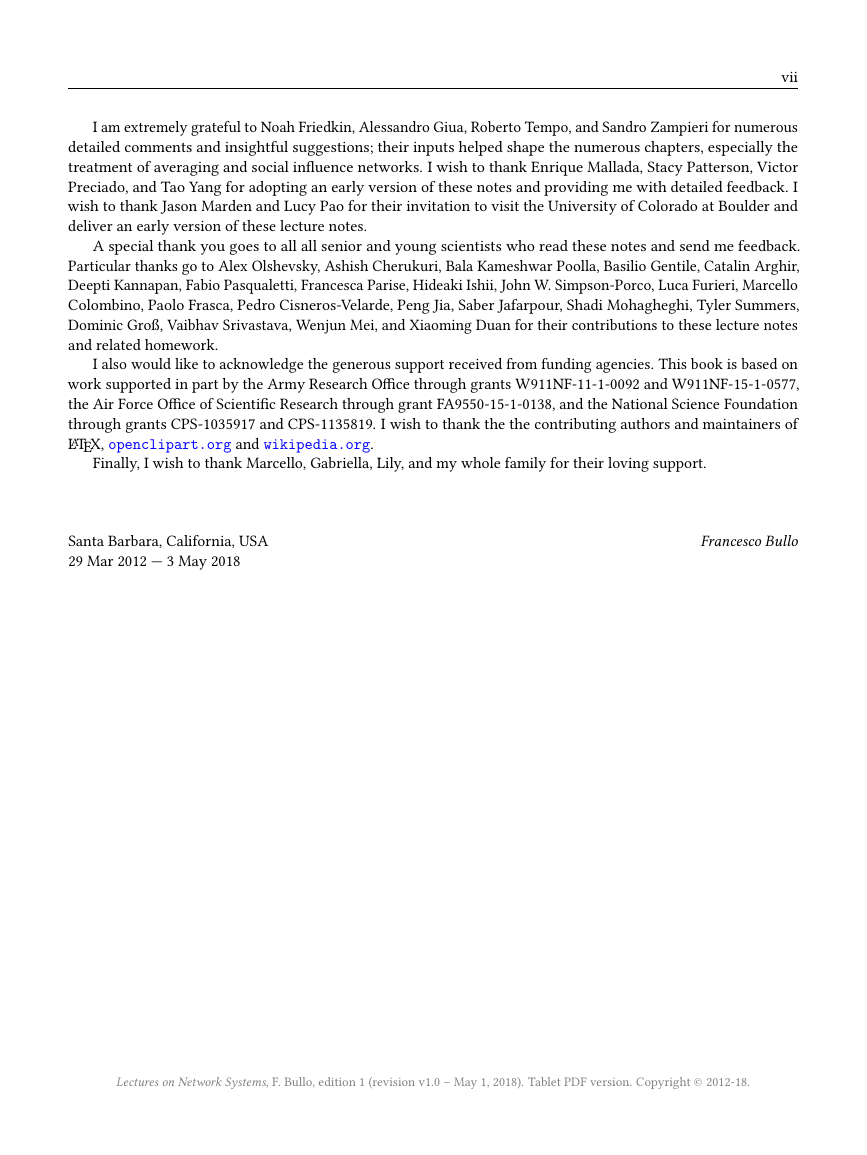
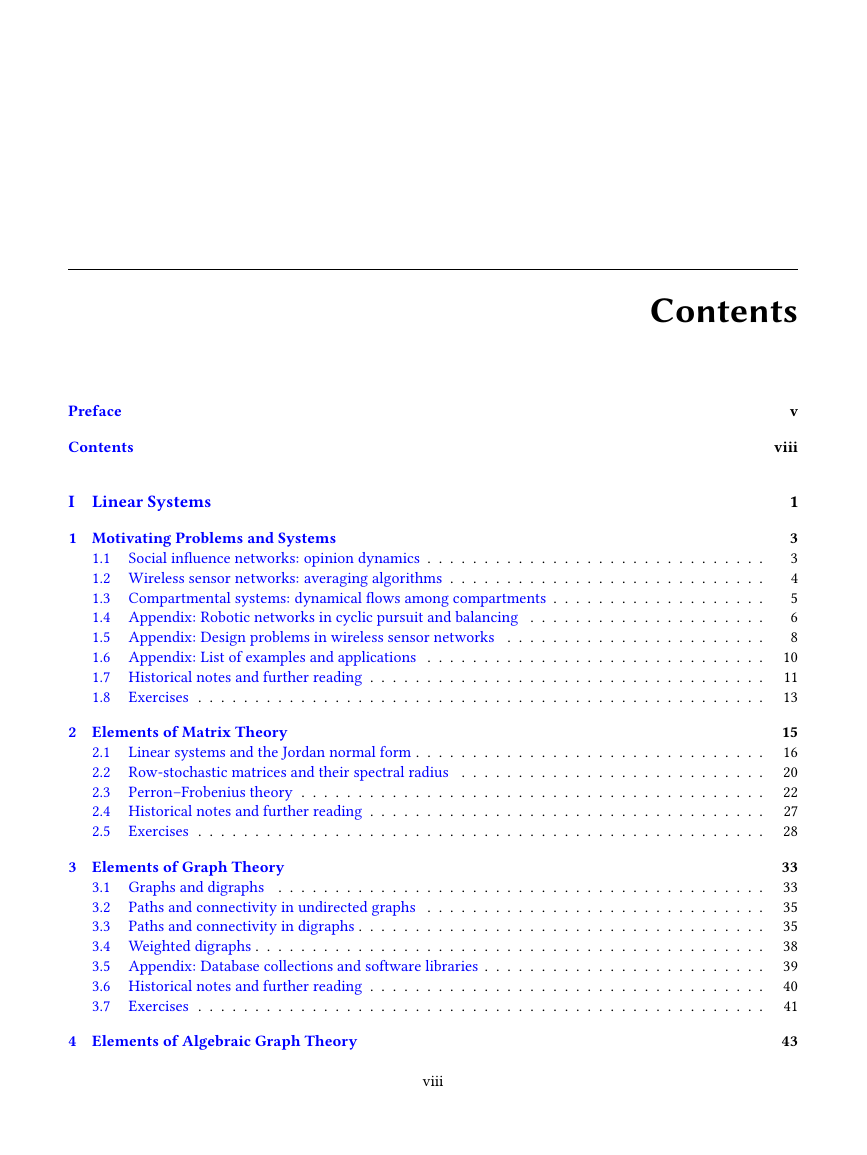








 2023年江西萍乡中考道德与法治真题及答案.doc
2023年江西萍乡中考道德与法治真题及答案.doc 2012年重庆南川中考生物真题及答案.doc
2012年重庆南川中考生物真题及答案.doc 2013年江西师范大学地理学综合及文艺理论基础考研真题.doc
2013年江西师范大学地理学综合及文艺理论基础考研真题.doc 2020年四川甘孜小升初语文真题及答案I卷.doc
2020年四川甘孜小升初语文真题及答案I卷.doc 2020年注册岩土工程师专业基础考试真题及答案.doc
2020年注册岩土工程师专业基础考试真题及答案.doc 2023-2024学年福建省厦门市九年级上学期数学月考试题及答案.doc
2023-2024学年福建省厦门市九年级上学期数学月考试题及答案.doc 2021-2022学年辽宁省沈阳市大东区九年级上学期语文期末试题及答案.doc
2021-2022学年辽宁省沈阳市大东区九年级上学期语文期末试题及答案.doc 2022-2023学年北京东城区初三第一学期物理期末试卷及答案.doc
2022-2023学年北京东城区初三第一学期物理期末试卷及答案.doc 2018上半年江西教师资格初中地理学科知识与教学能力真题及答案.doc
2018上半年江西教师资格初中地理学科知识与教学能力真题及答案.doc 2012年河北国家公务员申论考试真题及答案-省级.doc
2012年河北国家公务员申论考试真题及答案-省级.doc 2020-2021学年江苏省扬州市江都区邵樊片九年级上学期数学第一次质量检测试题及答案.doc
2020-2021学年江苏省扬州市江都区邵樊片九年级上学期数学第一次质量检测试题及答案.doc 2022下半年黑龙江教师资格证中学综合素质真题及答案.doc
2022下半年黑龙江教师资格证中学综合素质真题及答案.doc